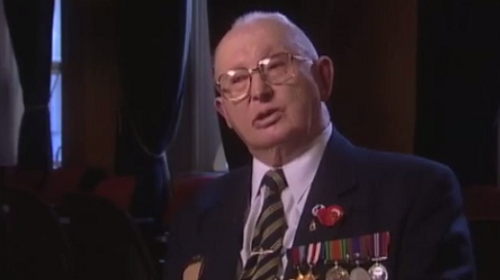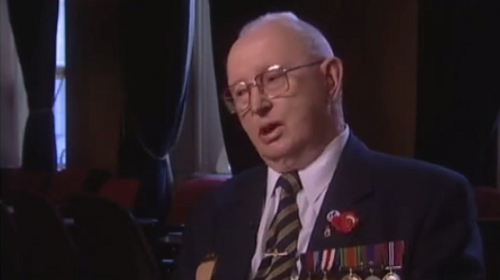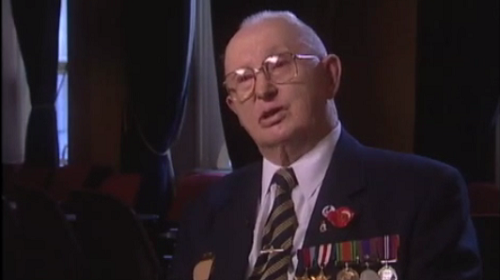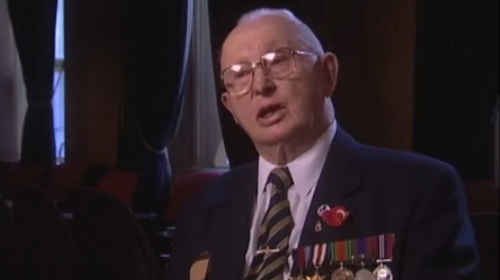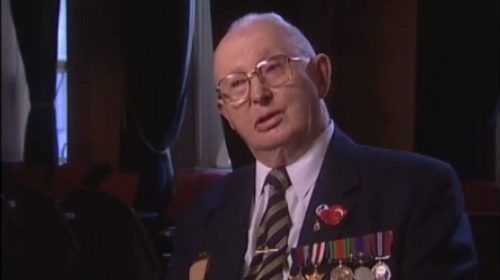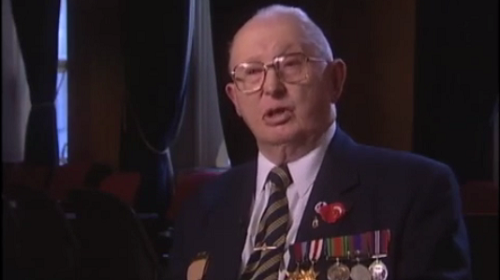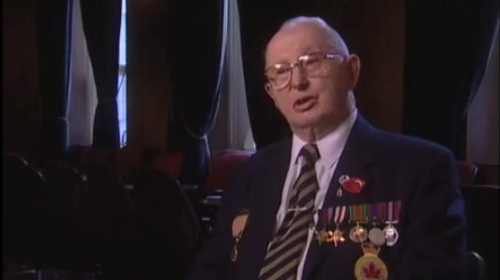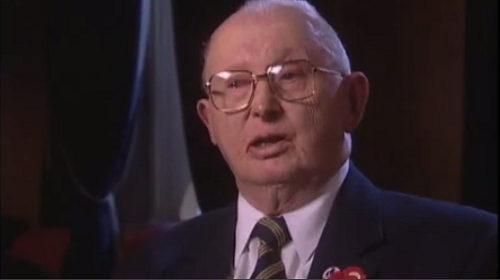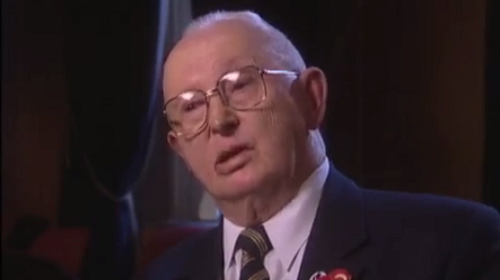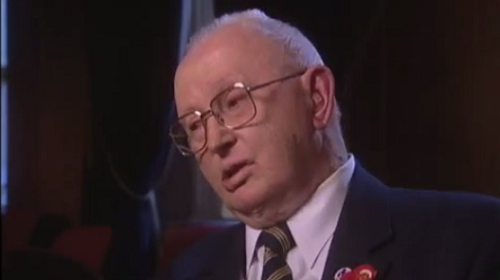Going over by Convoy
Heroes Remember
Going over by Convoy
From there we went to, I think it was called Debert in Nova Scotia where they
loaded us up, and there was oh, hundreds of boats making up the convoy and it
would be pretty late in the season ‘cause it was cold. It took about two weeks
to get it all lined up. It was so heavy, we were just barely above the
water lots of times. You'd almost sink if a big wave would come because you have
all your stuff with you, eh, supposed to have, anyway. You're kind of sorry because,
gee whiz, look, I'm going to end up sinking in the ocean, I'm not going
to get over there. It was cold and dirty. Any ship that they could find it was
loaded with people, and they said they cleaned them out but they didn't. And there'd be
rats and mice and stuff, anything that would float. And there would be maybe four
or five hundred boats, big convoy, big convoys. They would take weeks, couple
of weeks to get across. The worst part, you didn't have enough water to keep clean.
Even the toilets and that were all messy. They had to wash them down, hose them
down, because there's about six, seven hundred, to a thousand people. The boats
weren't meant for that because you've got all your trucks, tanks, some tanks,
service tanks. Each boat had something so if one sunk the equivalent might
be on the other. Some part of your regiment or division would get over there
with something with it, because those German U-boats were good. They weren't
scared. They'd come right into the middle of the convoy at night and start blasting
away because during the day they could could be picked off from the air planes.
You could see the shadow in the water or stuff like that. And then to throw depth bombs,
well you would get some of your own ships because they were loaded with stuff.
It didn't take much to tip one over. You know there was something going on,
because sometimes... they'd all start signalling. They'd have a kind of
‘woot-woot-woot-woot' kind of a foghorn thing and blinkers and lights, flashlights,
signal lights. Well, you knew there was an air raid. The captains would pass
it down, you know, to get your jackets on, but it wouldn't have done any good.
You would have froze in the water.
Related Videos
- Date modified:



